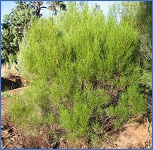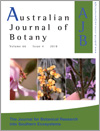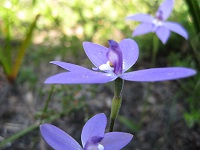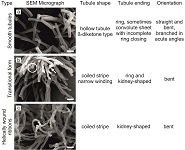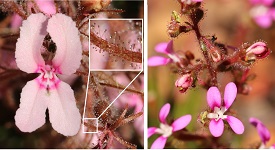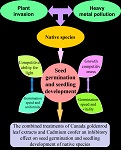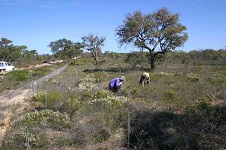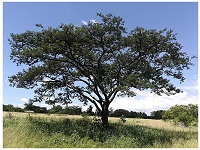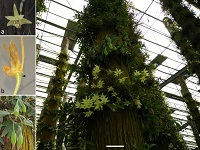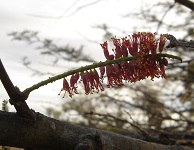Australian Journal of Botany
Volume 66
Number 4 2018
Splitting species into subspecies is useful for recognising distinct management units, and underpins conservation and restoration efforts; however, subspecies boundaries can be ambiguous and difficult to define, as has been the case for the hopbush, Dodonaea viscosa. Using a multilocus assessment of genetic variation, we found some congruence between genetic variation and subspecies assignment, particularly for arid and north-eastern subspecies, but geography better explained genetic groupings than subspecies assignment. We suggest that subspecies classifications do not well reflect the genetic variation we expose here, and our findings set the stage for reinterpreting morphological variation among populations in the context of the genetic disjunctions that have been uncovered.
Prescribed burning during autumn-spring occurs even in nature reserves in fire-prone areas of southern Australia, but what happens to the orchids, which are then growing actively? In this study, burning during autumn and winter (but not spring or summer) drastically reduced the numbers and sizes of two spring-flowering orchids (and the fungi on which they depend), and threatened their survival. Land managers should consider burning in spring rather than autumn in order to conserve the orchids under their care.
Epicuticular waxes are the outermost layer of plant cuticles and fulfil many vital functions. They appear in diverse three dimensional shapes. Here we show three different tubular shapes and the regeneration of waxes on living Eucalyptus gunnii leaves in high resolution. The combination of scanning electron microscopy and atomic force microscopy is a powerful tool to investigate dynamic processes on plant surfaces like the regeneration of plant waxes.
We quantified the degree of carnivory for different Stylidium species in an ecological context, by comparing the nitrogen isotope signatures of Stylidium species in their natural habitat with co-occurring carnivorous and non-carnivorous plants. The signatures of Stylidium species matched more closely with non-carnivorous plants than with carnivorous species, questioning the protocarnivory status of Stylidium.
The combined treatments of Canada goldenrod leaf extracts and Cd pollution significantly decreased seed germination and seedling development of lettuce compared with the control. In addition, the indices of allelopathic effects for all indices of lettuce were <0 under the combined treatments of high concentration of Canada goldenrod leaf extracts and Cd pollution (regardless of concentration). Thus, the combined treatments of high concentration of Canada goldenrod leaf extracts and Cd pollution pose an inhibitory effect on seed germination and seedling development of lettuce.
Establishment of threatened plant populations through translocations presents significant challenges. This study investigated the effect of three post-planting techniques on the establishment of six translocated plant species in Western Australia over a 10-year period. We found that fencing and supplementary summer watering are two effective approaches for improving plant translocation success.
Vachellia sieberiana nodulation partners remained unchanged regardless of the changes in soil P and N concentrations. Legume plants relied on both atmospheric and soil derived N. Low P grown plants showed higher specific N utilisation rates.
Whether the second fertilisation occurs in Orchidaceae has long been controversial. In stereo-cultivated plants of Dendrobium catenatum Lindl. in a greenhouse, many naturally pollinated flowers can bear fruits, thus providing a good foundation for embryological studies. Fertilisation of polar nuclei, primary endosperm nucleus (fertilised polar nuclei) and 2,4-celled early endosperms in D. catenatum were observed, demonstrating the occurrence of the second fertilisation in the orchid.
Prosopis rubriflora typically occurs in arboreal chaquenian areas, located at South Pantanal in Brazil and at a small range area in Paraguay. The primary pollinators are insects such as bees, which present short-range dispersion. However, due to several biological mechanisms that avoid selfing, P. rubriflora is preferably allogamous.
